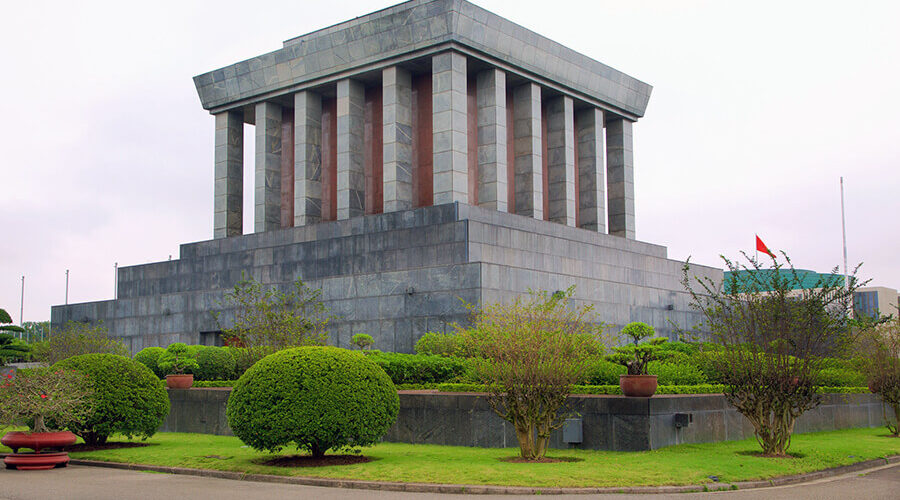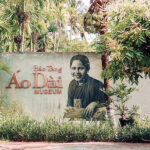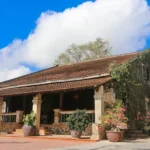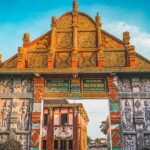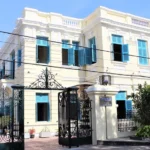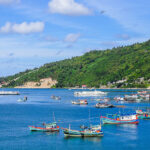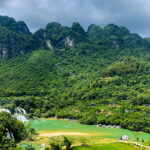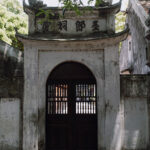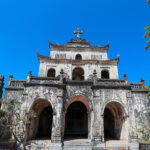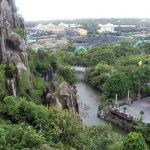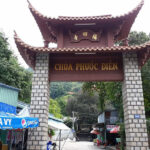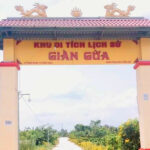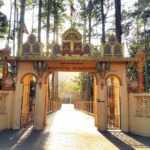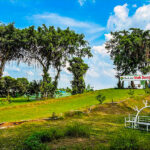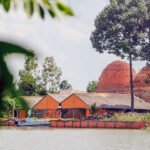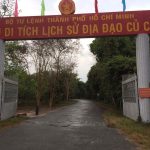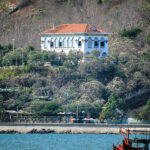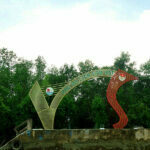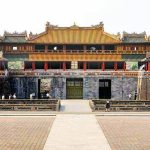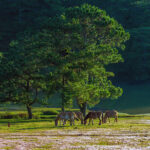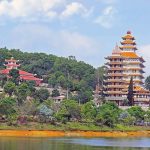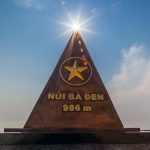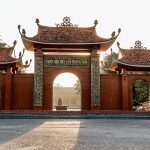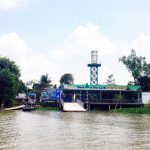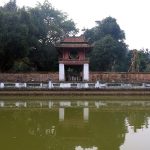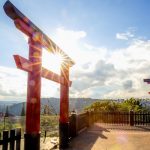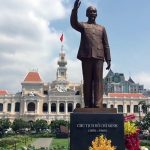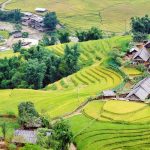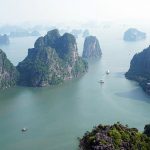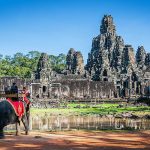The President Ho Chi Minh Mausoleum, also known affectionately as Uncle Ho’s Mausoleum, is a mausoleum which serves as the resting place of Vietnamese revolutionary leader and President Ho Chi Minh. This is one of the first place that most of tourist, not only Vietnamese but also foreigners, want to come to visit during their trip in Hanoi. This article will give some information about the mausoleum and other details you should note before coming to visit.
General information of the President Ho Chi Minh Mausoleum
President Ho Chi Minh Mausoleum is located at 1 Hung Vuong, Dien Bien Ward, Ba Dinh District, Hanoi City. The construction of the mausoleum began on September 2, 1973, right at the stage where he read the Declaration of Independence, giving birth to the Democratic Republic of Vietnam on 2 September 1945. On August 29, 1975, the Mausoleum was officially inaugurated.
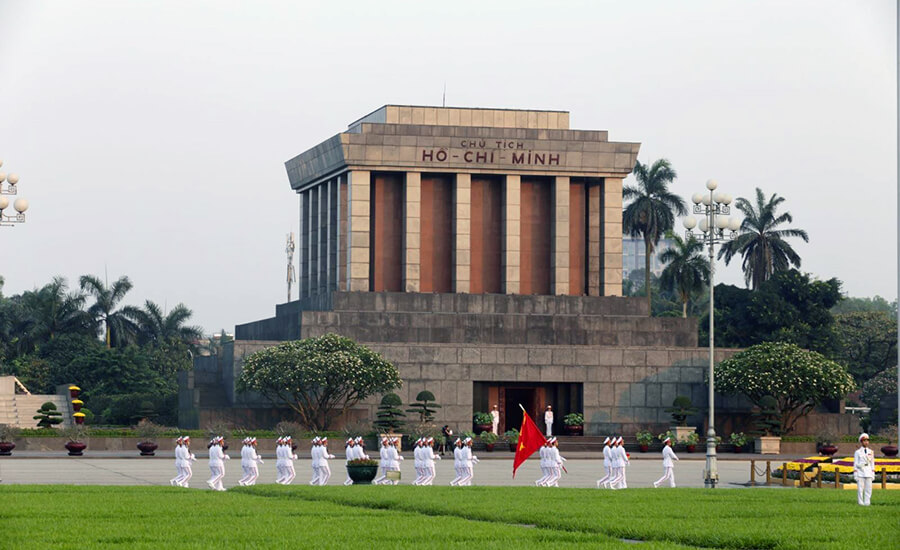
The project is a place to preserve President Ho Chi Minh’s remains according to the wishes and sentiments of the Party Central Committee and the most of Vietnamese people. Many generations has been come to visit to express their gratitude to the President, the beloved father – who was determined to follow the revolutionary path with the desire to build a peaceful, unified, independent and democratic country.
Opening hours:
The mausoleum is open every morning of the week, except Monday and Friday. If holidays such as the first day of Tet (Lunar New Year), National Day, Ho Chi Minh’s birthday, etc. fall on Monday or Friday, the mausoleum is still open as usual.
Winter (November 1 – March 31): weekdays from 08:00 – 11:00; Saturday/Sunday/Holiday from 08:00 – 11:30.
Summer (April 1 to October 31): weekdays from 07:30 – 10:30; Saturday/Sunday/Holiday from 07:30 – 11:00.

Entrance fee:
- Vietnamese citizens: free to visit Uncle Ho’s Mausoleum.
- For foreigners: the entrance fee to the Ho Chi Minh Museum or the stilt house is 25,000 VND/person/site.
Regulations when visiting President Ho Chi Minh Mausoleum
When visiting President Ho Chi Minh Mausoleum, all visitors must strictly follow the regulations:
- Visitors must have a serious attitude, dress neatly, cleanly and tidily.
- Visitors must check in their luggage and go through the security check gate. Visitors are allowed to bring a handbag containing money, precious metals, phones, and small cameras that are turned off. Specialized cameras and cameras are not allowed.
- On the way to visit, visitors must follow the instructions of the Organizing Committee, not jostle or push.
- Hold your hats in right hand, with the inside of the hat facing outwards when coming inside the Mausoleum.
- After entering the Mausoleum, do not make noise, do not point, touch the wall, do not put your hands in your pants or shirt pockets, and do not smoke.
- It is forbidden to film, take photos, draw the room where President Ho Chi Minh’s body is placed in the Mausoleum and post these images on the mass media.
Architecture of President Ho Chi Minh Mausoleum
The overall architecture of the Mausoleum is a solid square block, consisting of 3 layers. The mausoleum is 21.6m high and 41.2m wide. The structure of the Mausoleum is specially designed to withstand floods, bombs and earthquakes of magnitude 7 on the Richter scale. The exterior of the Mausoleum is covered with gray granite, surrounded by rows of marble columns, with the words “CHỦ TỊCH HỒ – CHÍ – MINH (President HO – CHI – MINH) in deep red jade standing out on the top of the Mausoleum.

There are always 2 guards standing guard in front of the Mausoleum, changing shifts every hour. The lobby of the Mausoleum is covered with pink-veined marble, providing a backdrop for the inscription “Độc lập, Tự do” (meaning Independence, Freedom) and the President signature inlaid in gold.

The Mausoleum currently has a total of 200 doors made from many types of precious wood collected from all over the country. The lawn in front of the mausoleum consists of 18,000 m² of ginger grass, a native grass in the South of Vietnam.

In the middle of the mausoleum is the room where the body of the President is preserved, covered with marble. His body is placed in a glass box, on a bed placed on a stone pedestal and always guarded by soldiers.
On both sides of the main door are 2 frangipani trees. In front and behind the mausoleum are planted 79 cycads symbolizing President Ho Chi Minh’s age of 79.
Journey to visit Ho Chi Minh’s mausoleum
To be able to see all the unique features in this area, you will visit each area in order from Ba Dinh Square, the President Ho Chi Minh mausoleum to his stilt house, fish pond, then visit Ho Chi Minh museum and finally One Pillar Pagoda.
Ba Dinh Square
Ba Dinh Square is located in front of President Ho Chi Minh’s mausoleum, the largest square in Vietnam. Ba Dinh Square has a large campus with many large grass plots, between the grass plots is a 1.4 m wide path. In the middle of the square is the national flagpole.

This is where the flag-raising ceremony takes place at 6:00 – 6:30 in the morning and the flag-lowering ceremony takes place at 21:00 pm every day.

This is where rallies and major historical celebrations of the country often take place. Through many historical ups and downs, Ba Dinh Square has become the pride of the people of the capital, a destination that every tourist wants to visit.
Presidential Palace
The Presidential Palace was built in the classical French style. Initially, the building was built for the Governor General of Indochina. When the French colonialists withdrew from Vietnam in 1954, the President Ho Chi Minh worked here until his death in 1969.

Currently, the Presidential Palace is only used as a place to welcome officials and organize state events. The Palace grounds are planted with many trees, today there are still many large ancient trees. Inside the Presidential Palace, public access is limited.
Visiting President Ho Chi Minh Mausoleum
Before entering the mausoleum, you need to line up neatly and follow the crowd. Usually on holidays or in the summer, visitors to the mausoleum are very crowded and bustling.

When entering the mausoleum, you just need to follow the direction of the signs and follow the crowd in front, it is very easy to visit. Visitors are allowed to walk around the mausoleum continuously.
Uncle Ho’s Stilt House
With his inherent simplicity, President Ho Chi Minh did not live in the luxurious palace but lived in a simple stilt house. Currently, this place still preserves intact the artifacts from his lifetime. Uncle Ho’s stilt house is made of wood, with a 2-storey architecture of the Tay – Thai ethnic stilt house in Viet Bac. The house was built according to Uncle Ho’s wishes discussed with architect Nguyen Van Ninh which same as the one in Viet Bac (where he lived during the war against French colonial empire), with a spacious first floor, two rooms on the second floor, a partition between the two rooms used as a bookshelf, and a corridor around.
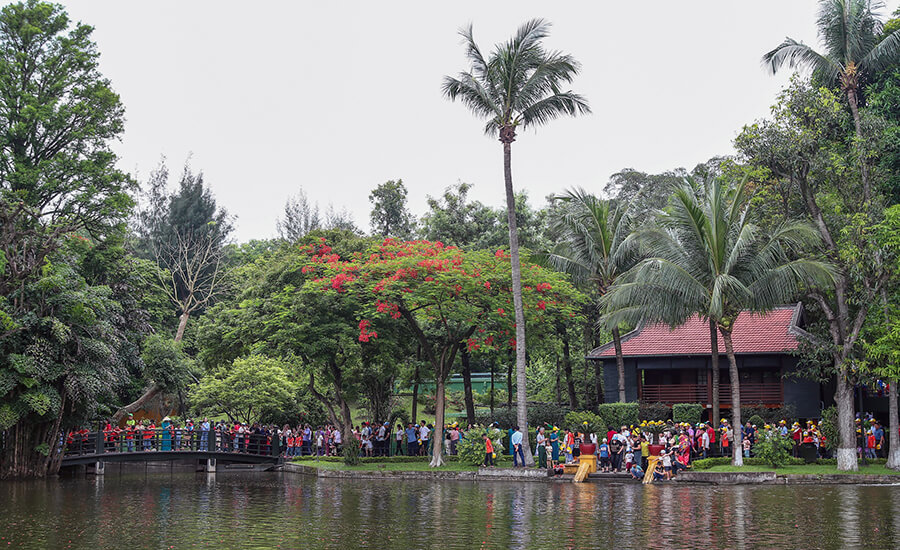
The stilt house is associated with many important events of the country, so it is both an architectural heritage, a cultural heritage, and contains great spiritual values.
In front of the stilt house is fish pond – where Uncle Ho often fed the fish and relaxed. Every year, on holidays, he reminded the waiters to catch fish to give to the leaders or the guards. Domestic and international delegations were often invited by Uncle to eat delicious dishes that he “produced himself”.
Ho Chi Minh Museum
When visiting the Ho Chi Minh Mausoleum, don’t forget to visit the Ho Chi Minh Museum. This is where artifacts and documents about the life and personality of the great President Ho Chi Minh are kept.

One Pillar Pagoda
In the grounds of the Bac Lang relic site, there is also the One Pillar Pagoda – a pagoda dating back to the Ly Dynasty and has become one of the symbols of the capital Hanoi. The pagoda has a unique architecture with a single pillar resembling the capital’s thousand-year-old lotus.

With the above information, we hope you have a better understanding and can best prepare for your visit to the Ho Chi Minh Mausoleum. If you have the opportunity to visit Hanoi, do not forget to visit the President Ho Chi Minh Mausoleum.
Source: collected by An
Follow us for the best deal with Vietnam package tours and visa services!




